If you’ve followed my blog for any amount of time, you’ll note that I’m using vintage modern lasts, typically for men’s shoes, when making my reproductions. This has a variety of issues, the modern look notwithstanding, but also when it comes to closure types other than those that happen over the front of the shoe. I’ve observed that in nearly every instance that I’ve made a shoe with a side closure that the heel ends up being unnecessarily large, and has a propensity to slip off. Giving it some thought, I do think that it has a great deal to do with the last itself. As a result, I was fortunate enough to get my hands on some reproduction lasts, both medieval and Elizabethan.
What makes a last so important, you might ask? Everything! The last is truly the “soul” (no, I’m not falling for that particular pun =) of the shoe. It is more than just a representation of the person’s foot, because if that was all it was, then we would all be wearing foot-shaped shoes (as opposed to just some of us!)
In truth, a proper last can also be used for measuring and drafting out patterns, as a tool itself, and indeed, quite literally, for creating style. A friend of mine made the excellent point that we ought not to think of shoes as gloves, and there is a certain truth to that.
In any event, you can instantly see differences between the medieval and renaissance lasts. Though they do have some similarities like the narrow waist and the rounded profile of the edge of the last, medieval lasts in general tend to be a bit “blockier,” for lack of a better term. You can also notice this on many of the illustrations and illuminations of the time period – they look exactly this shape. For clarity, I’m going to post a picture of the medieval lasts on top and the Elizabethan lasts on the bottom.
Look how narrow those heels are – but, that is pretty typical of the time, and the upper often overhangs the sole quite considerably.
The bottom of the last profile is also unique, and you can easily see the difference between the smoothed-out Elizabethan lasts and the angular medieval lasts.
The side-view profile is particularly informative. There is a significant amount of toe-spring on the medieval last, but the heel and ball area are about level. The Elizabethan last is much less pronounced in terms of toe spring, but the heel itself seems a bit higher.
The front-to-back images are also very interesting. You can see how narrow the heel of the medieval last is for the respective size of the front of the foot. With larger feet, this would also increase, but the general case of the heel being smaller is quite telling. Also note the curve of the “feather,” that is, where the side of the last turns into the sole. On modern lasts, this is almost a 90 degree angle, making a sharp delineation, but on these lasts, it is soft. The end result, especially for welted shoes, is that the welt would likely get pulled under the shoe more readily, consistent with many extant pieces and pictorial evidence.
I plan for these to be essentially my models to create new lasts. One pair of lasts can often be used for several different sizes by adding bits of leather to the back of the last, as well as factoring in any adjustments needed for the width of the foot.
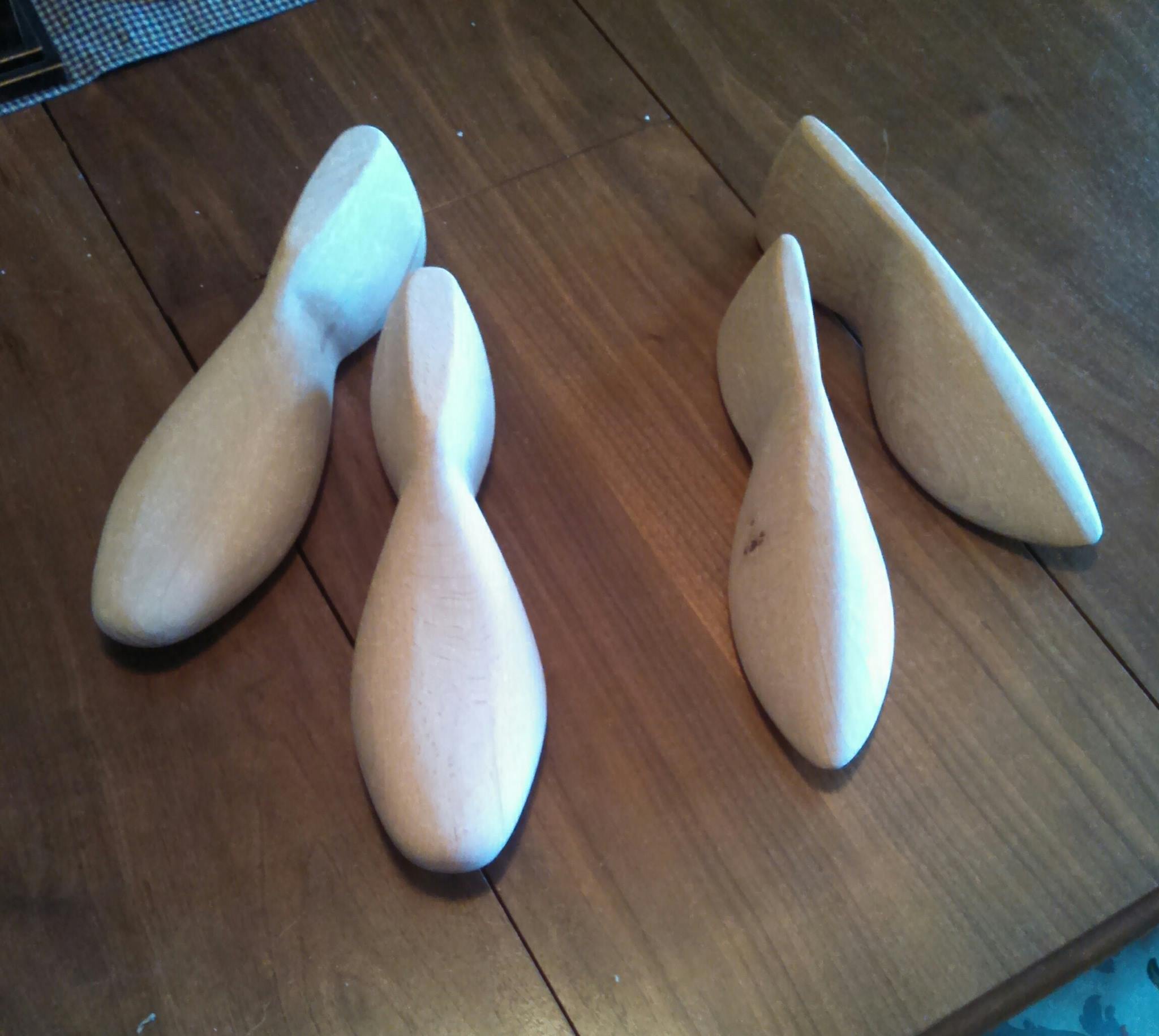
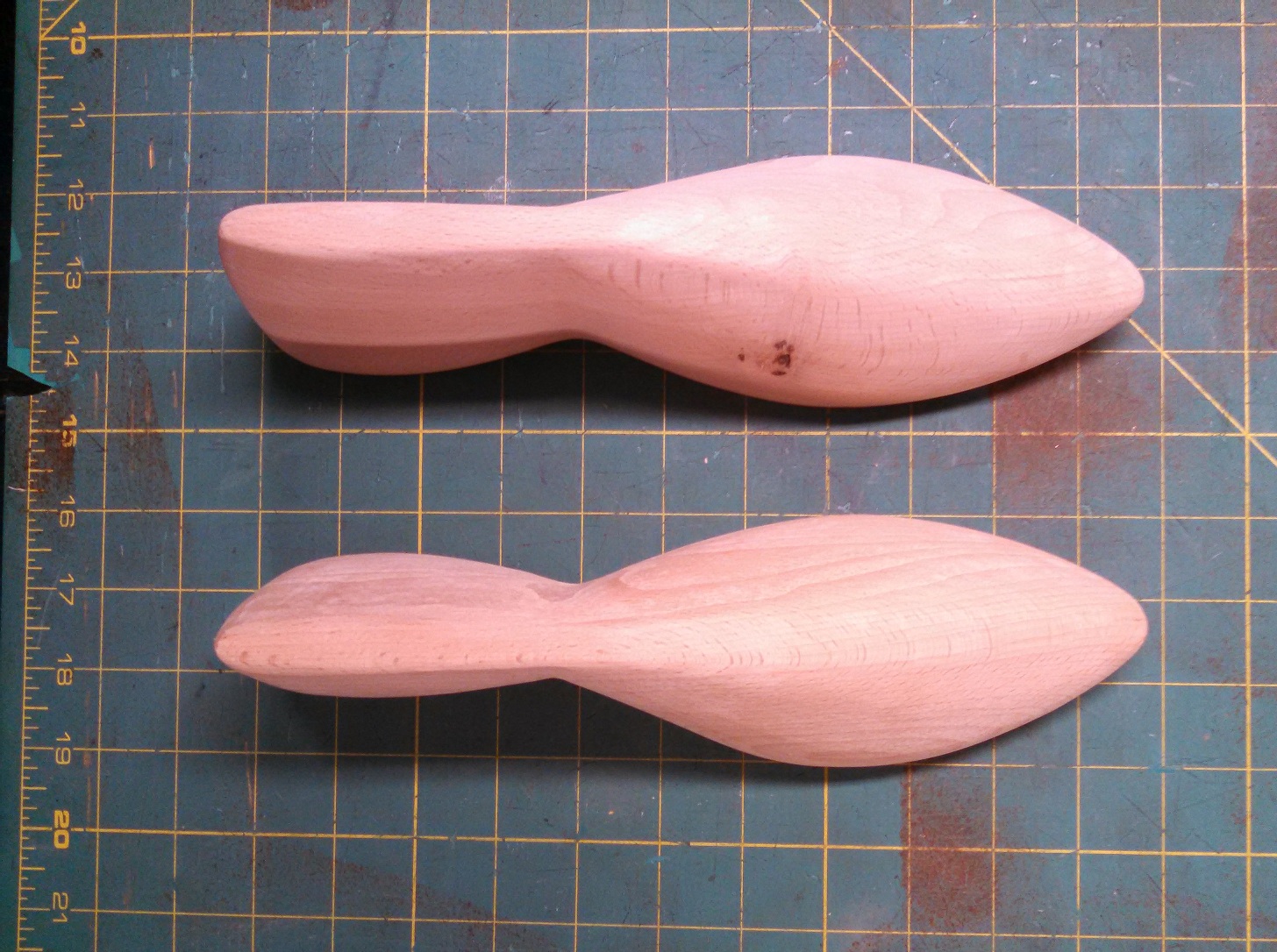

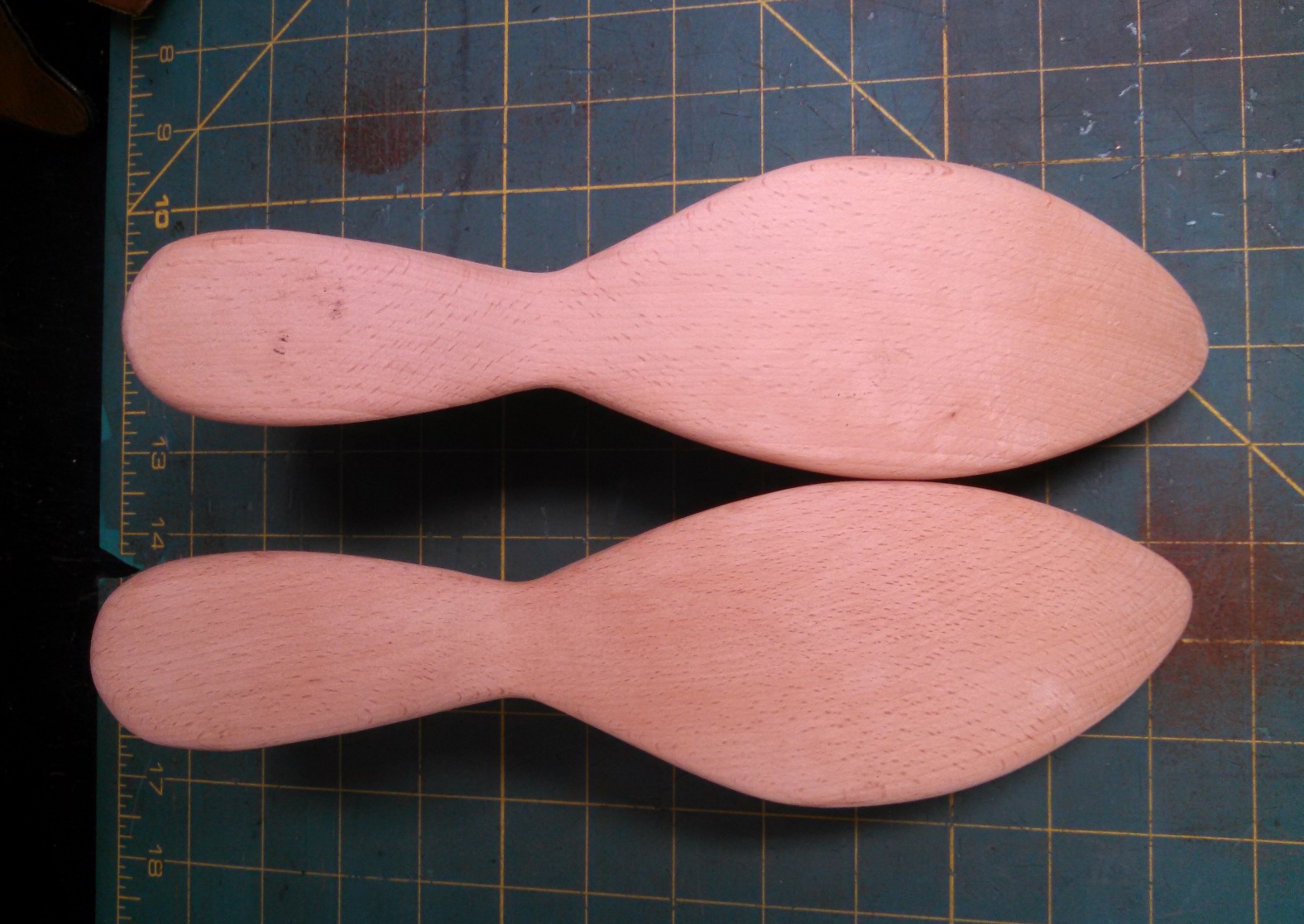
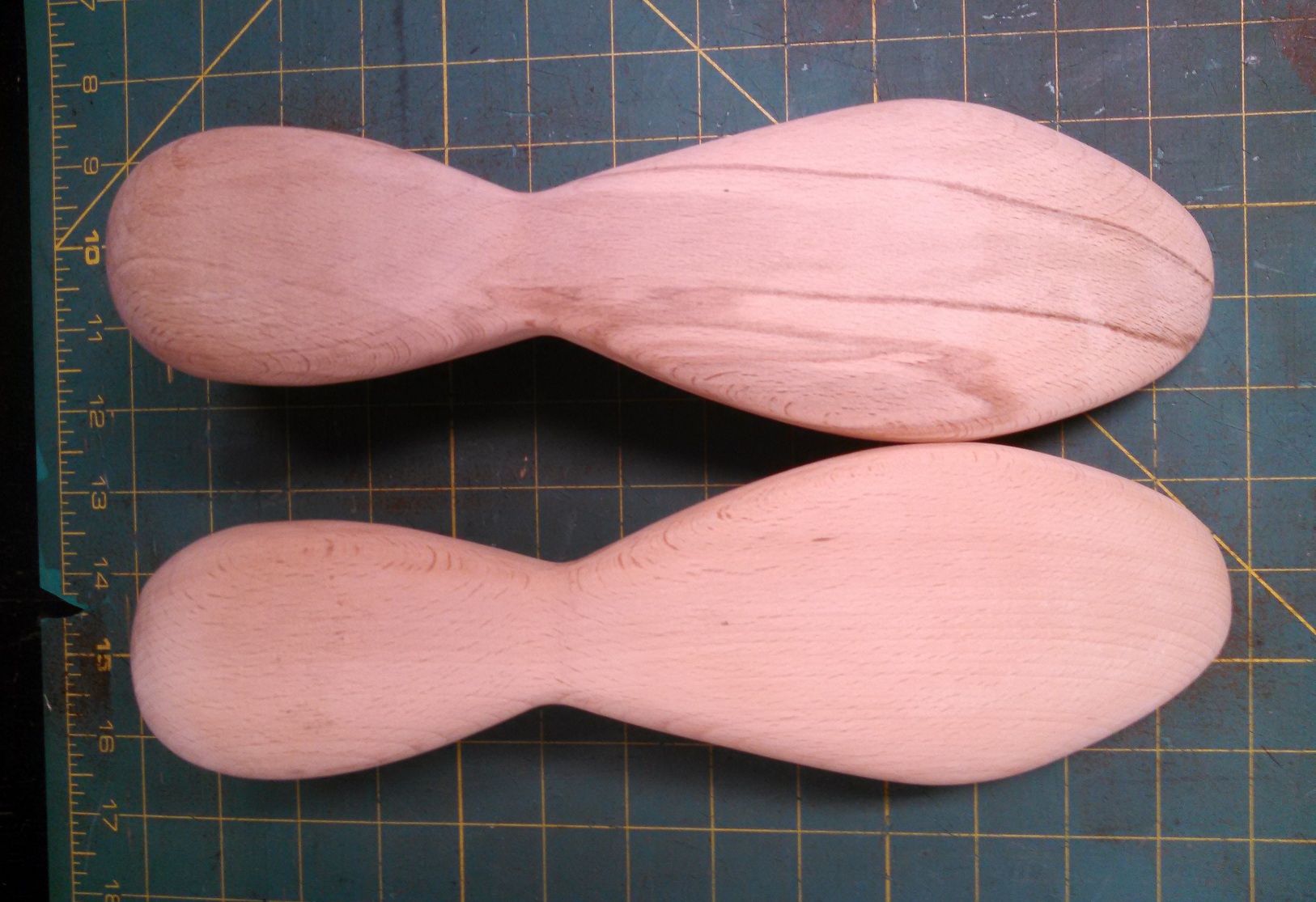
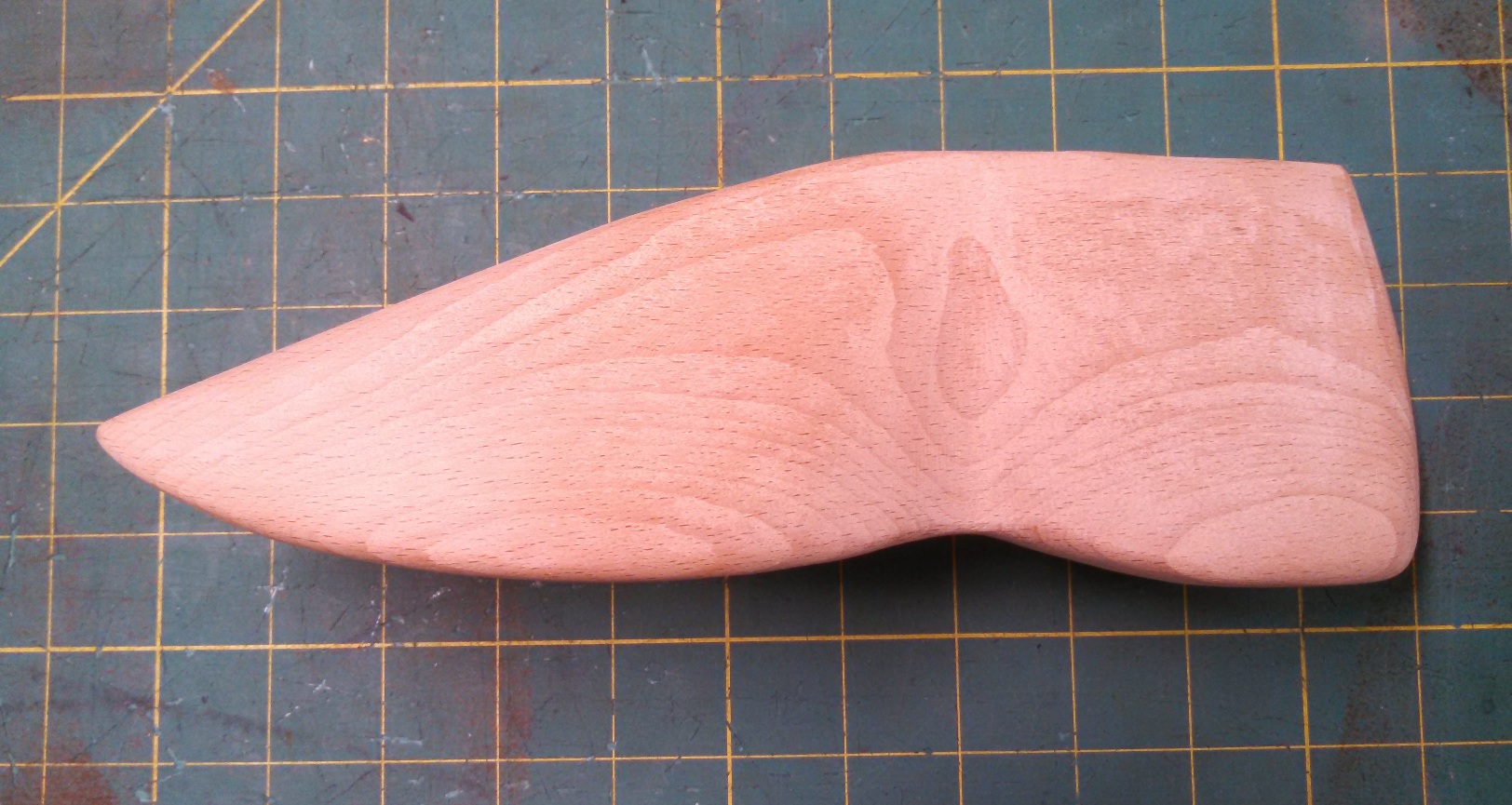
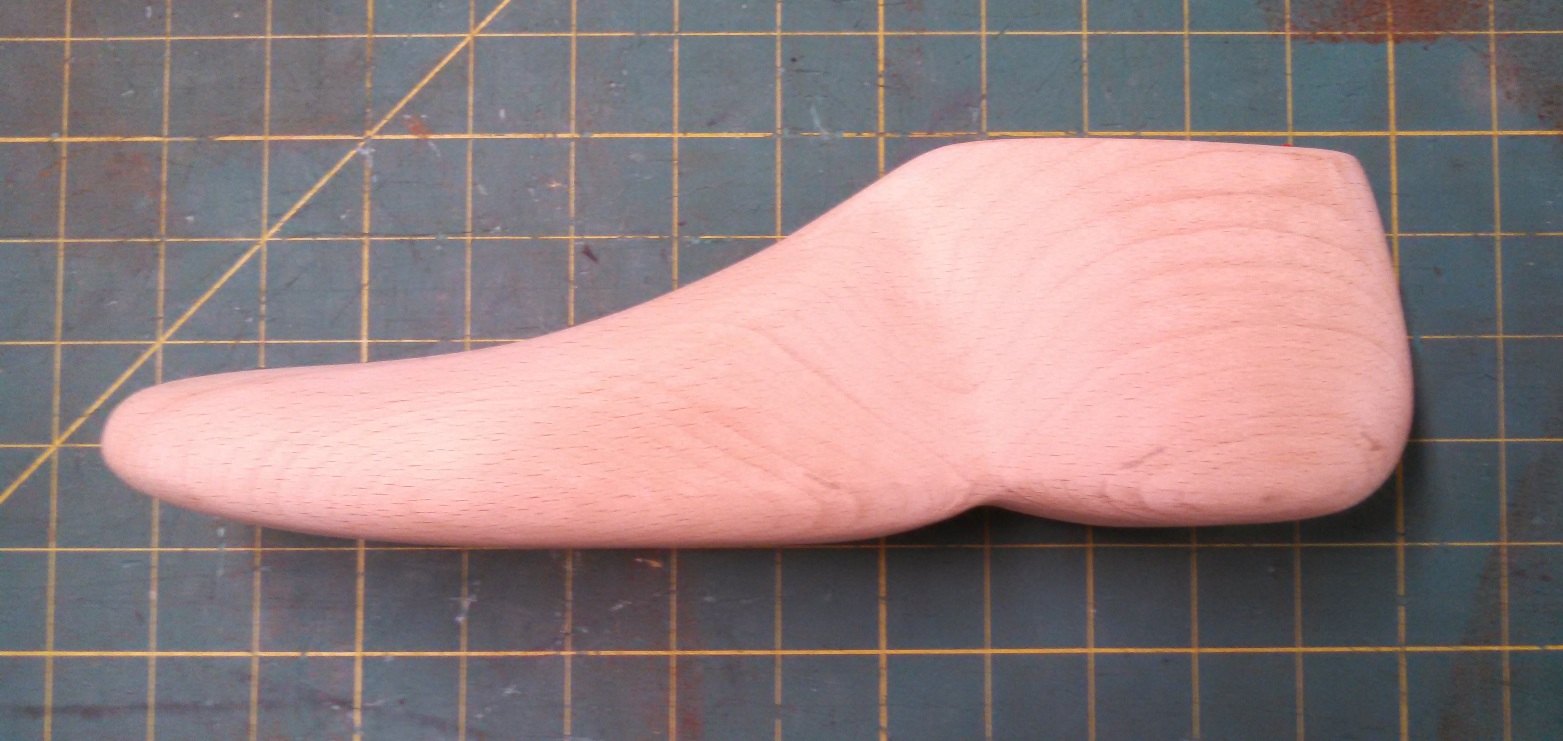
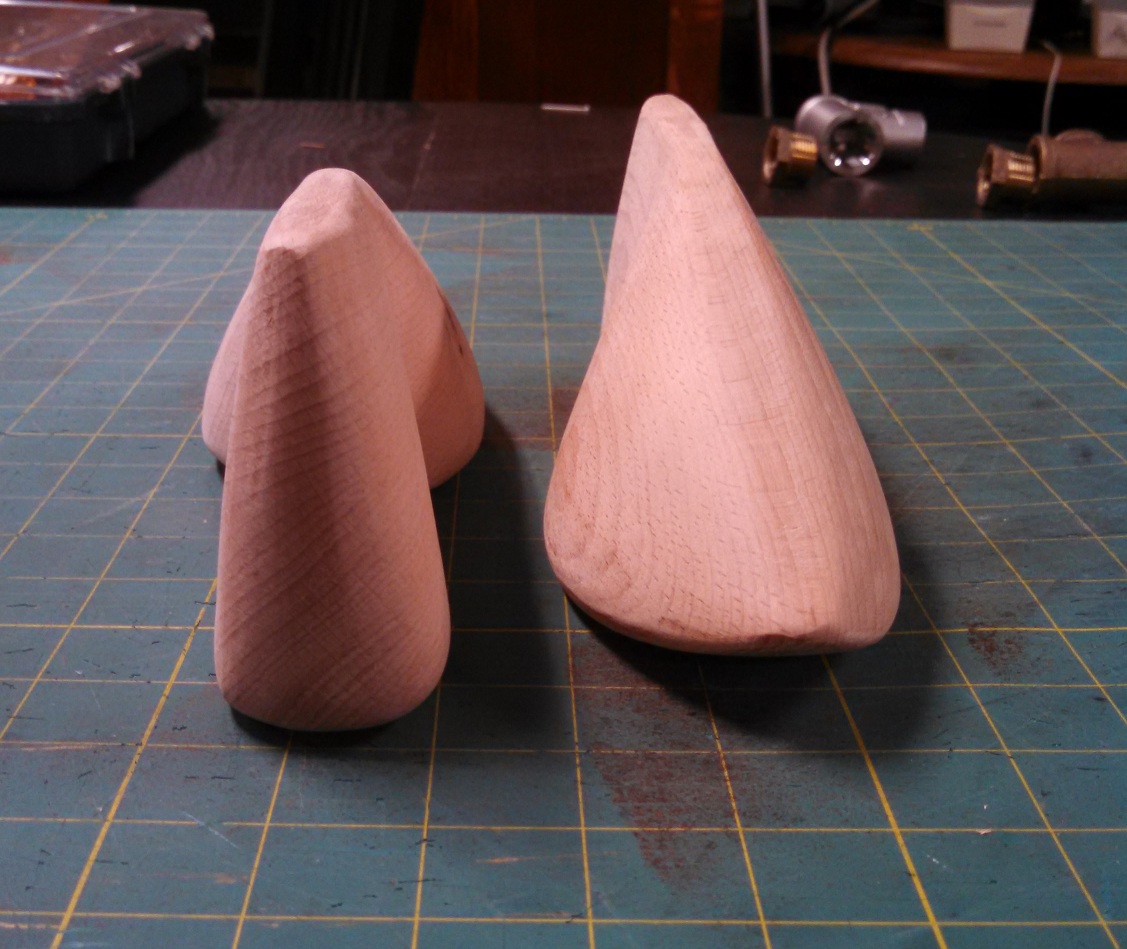
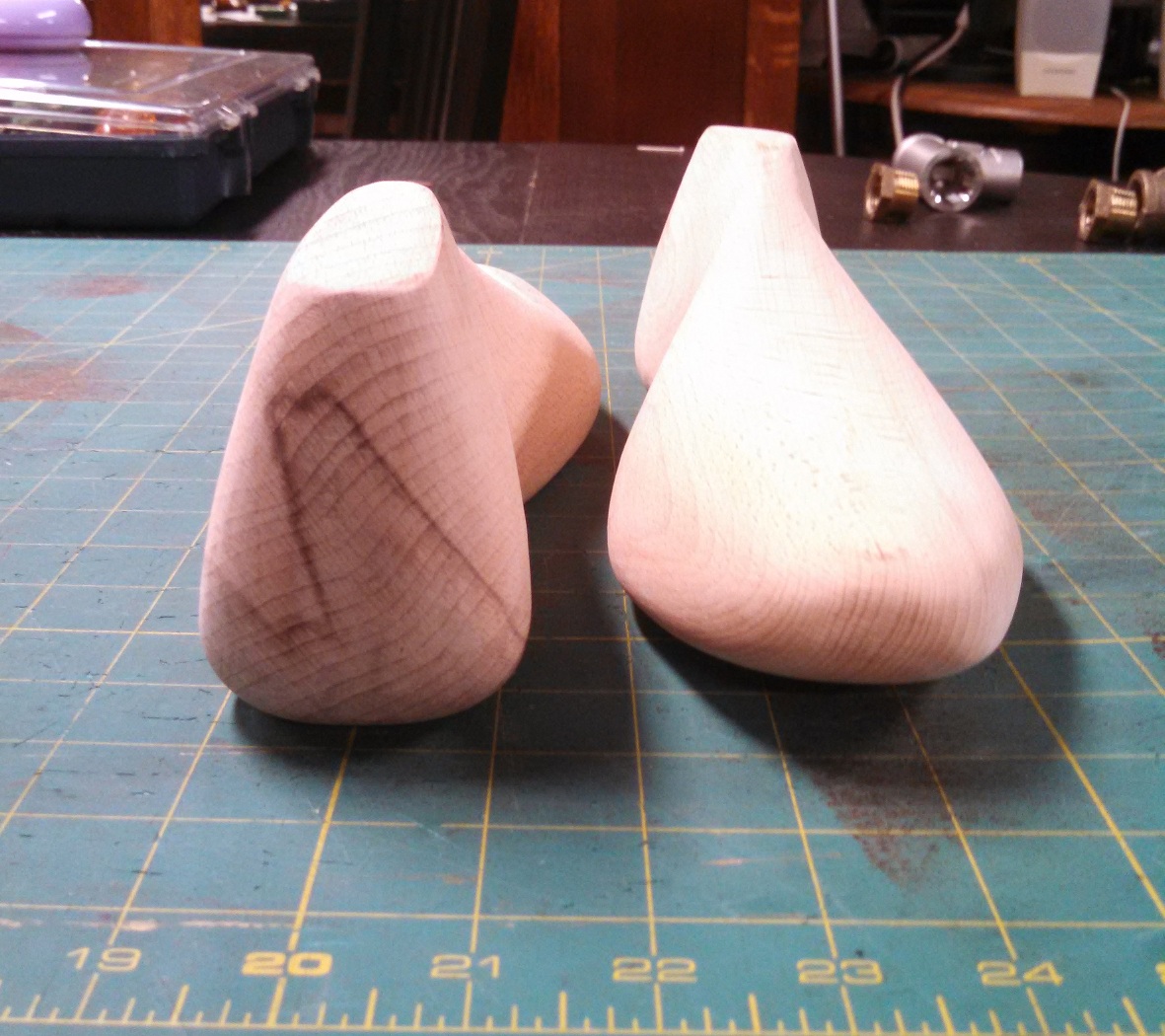
Very cool! I can’t believe how narrow they get at the heel and waist – it seems like it would pinch something fierce! Do you know what century the Medieval last is from?
I tried my hand at making lasts for the shoes I’m making right now and, while I’m pretty happy with the result (I am not a woodworker by any stretch of the imagination), I definitely went very wrong in some areas, especially with a lack of “toe spring”. Mind you, they were based on 10th century examples, some of which are just flat bottomed. I’ll chalk it up to a learning experience and go from there.
Indeed – however, thinking about it, I think that it would actually provide a tight fit around the heel, especially for shoes that are closed with a side lacing. If you look at a lot of medieval shoes, the sole is actually much smaller than the outline of the foot, and a welt is included to act kind of as a sole extension all the way around. Perhaps fashion is responsible for this type of evolution, but a smaller insole continued well into the 16th century. I also think that the medieval last especially was intended not to be a perfect representation of the foot, but essentially give a general shape for the right-sized foot. Likely, I’ll have to add additional pieces of leather on the instep or the sides to make shoes suitable for larger feet. As you say – learning experience!
I have a high instep,wide, straight foot,and rounded toe, like the medieval last. Modern shoes are Not Straight Lasted. They have a curve to them. It’s hard to find shoes that don’t hurt my feet.
Have you any reference material or guidelines for making mideval lasts?
I am currently making modern and mid 19th century lasts though instructions for making earlier lasts seem wanting.
Hello! Unfortunately, my first attempt at medieval last making was a dismal failure. I have, however, been present when a last was carved, but like many things, it is much more art than science, and having seen it done once and doing it are two very different things!
Do you know where I might be able to purchase a replica medieval last? I haven’t had any luck finding any for sale online.
Hello! These days, they are rather difficult to find and expensive. I would recommend carving your own!